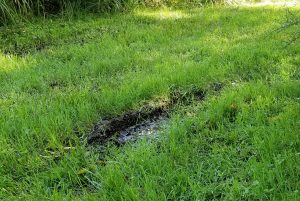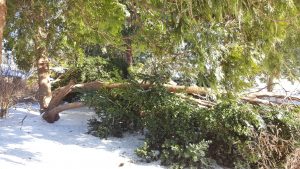Recent storms have caused damage to trees, landscapes, and homes across the country. Many trees are too large for homeowners to safely remove. With over 50 fatalities yearly nationwide for professionals removing or pruning trees, the rate is much higher for people not trained in specialized tree work. Proper tools and equipment, as well as safety procedures, must be used.
Pruning initiates wound response by trees (compartmentalization), isolating microorganisms and insects to avoid further damage. Remove broken or damaged limbs, but not more than one-third of the branching system of any tree. If more than one-third of branches have been damaged, remove the tree. Cut limbs back to a lateral branch collar swelling, do not leave a stub. Do not paint or seal wounds, which should be allowed to heal naturally.

A fact sheet from Oklahoma State has more information: http://factsheets.okstate.edu/documents/epp-7323-managing-storm-damaged-trees/?fbclid=IwAR2Tz9N_LUO3ODoJnHk6VZEA1c-cqFkzqkiz2JXH8bU7smKVBtLXJINe9BA
NFG 5/31/2019





